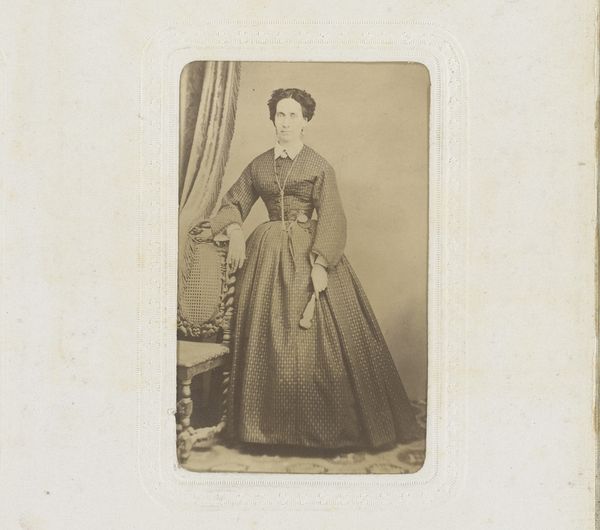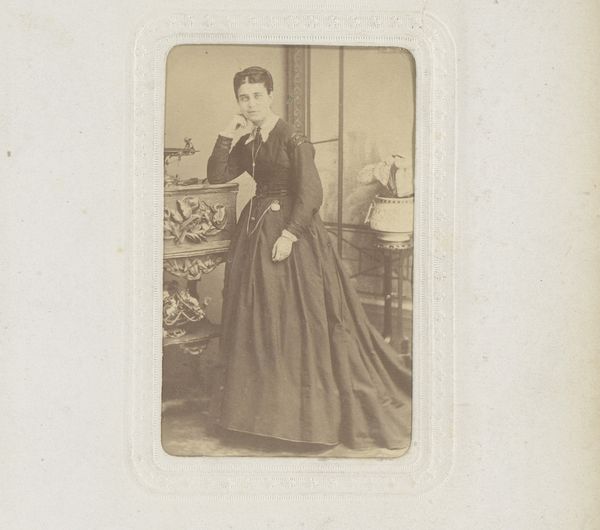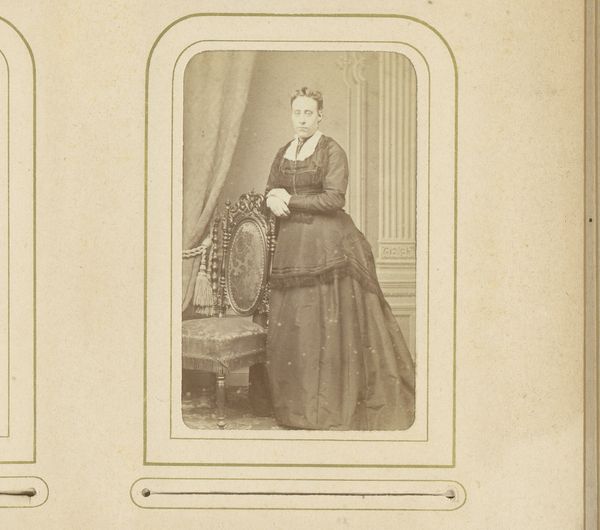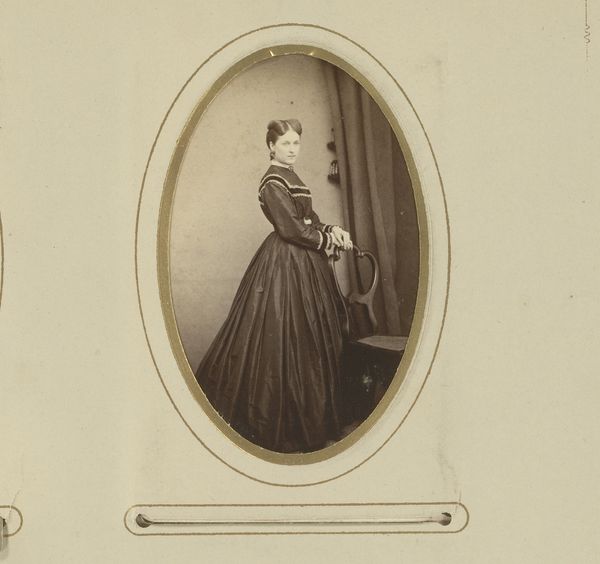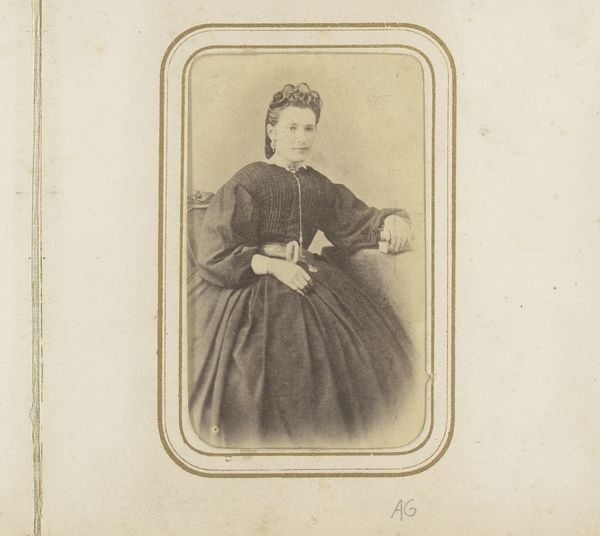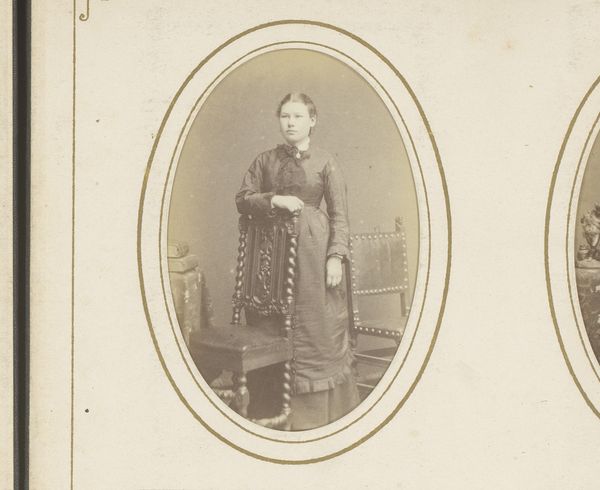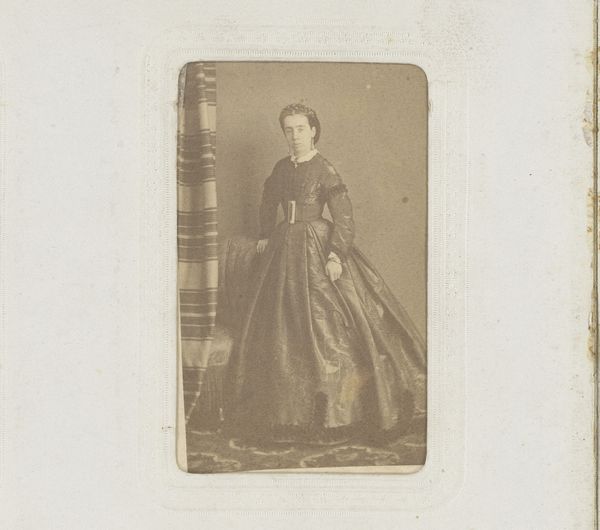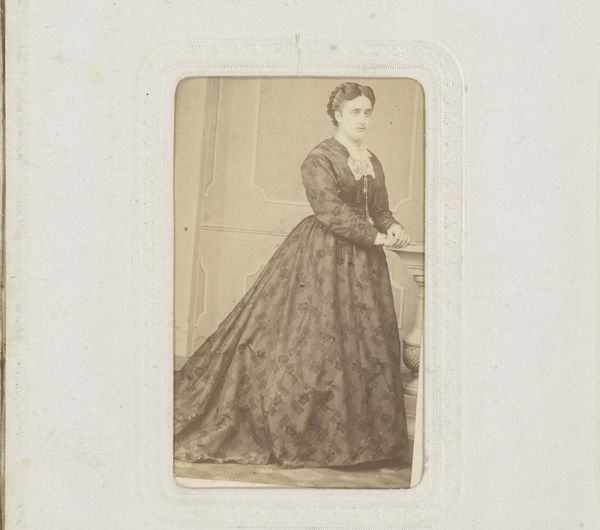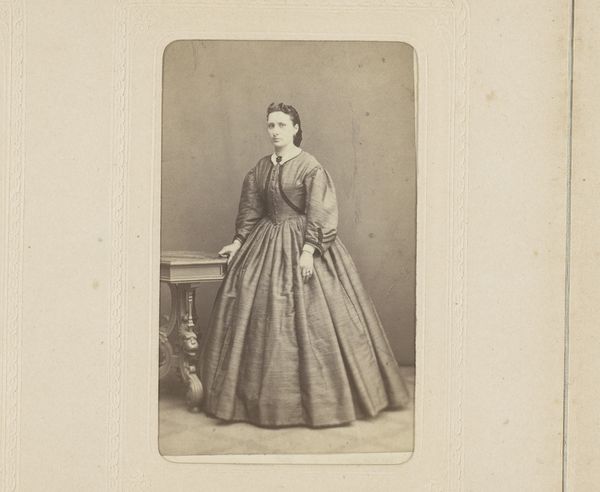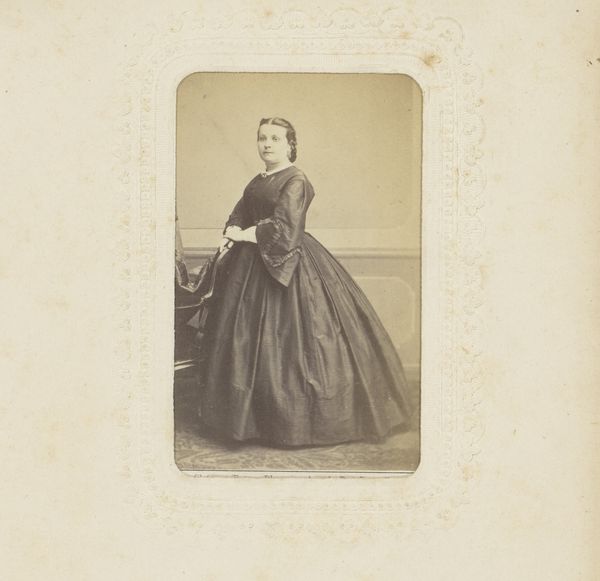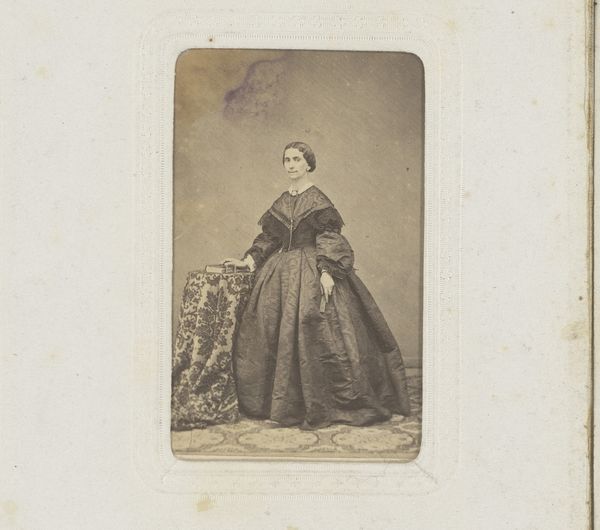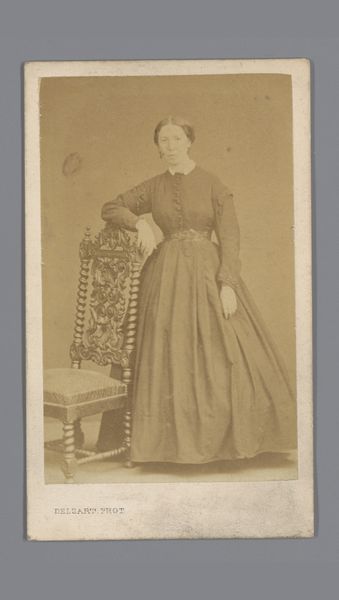
photography, gelatin-silver-print
#
photography
#
historical photography
#
gelatin-silver-print
Dimensions: height 83 mm, width 51 mm
Copyright: Rijks Museum: Open Domain
Curator: Wilhelm J. Grammann captured this gelatin-silver print, "Portret van een staande jonge vrouw met boek," sometime between 1862 and 1874. Editor: It's striking, even haunting. The somber tonality and rigid posture of the woman create a palpable sense of formality, maybe even constraint. Curator: Yes, and the materiality of the photograph itself speaks volumes. The gelatin-silver process was becoming increasingly common during this period, allowing for greater detail and reproducibility, catering to a growing market for portraiture among the bourgeoisie. It's no longer the laborious, exclusive realm of earlier photographic processes. Editor: Focusing on the image itself, notice the composition: a classic three-quarter pose, highlighting the details of her dress, the carefully arranged accessories. The lines are so precise and clean. It feels incredibly structured. Even the book acts as a prop that seems less about knowledge and more about status. Curator: Exactly. Think about the social pressures on women during this era – the expectations surrounding appearance, demeanor, and the symbolic representation of domestic virtue. Her clothing, although fashionable, likely involved significant labor in its creation, hinting at a social class supported by the toil of others. Editor: The lighting certainly contributes. Soft yet directional, it sculpts her face, but it's a melancholic light. And the chair and desk; objects for her adornment are pushed to the very edge of the picture and slightly out of focus. What does that asymmetry mean, in context of a photo, created using then modern printing methods, meant to celebrate this woman? Curator: I think the asymmetry is a telling detail of how women were seen. In many ways, her status still exists in relationship to the patriarchal social hierarchy. It could easily represent how access to tools of progress, and modern life, weren't evenly afforded across lines of gender, class and identity. Editor: So we have the individual portrayed, constrained within both the frame of the photograph and the larger societal frame, really reflecting the social and historical context. Curator: And brought to life using advances that, like the sitter, reflect all of the promises, advancements and constrictions of 19th-century modernity. It leaves us pondering the lives, labor and representation involved.
Comments
No comments
Be the first to comment and join the conversation on the ultimate creative platform.
